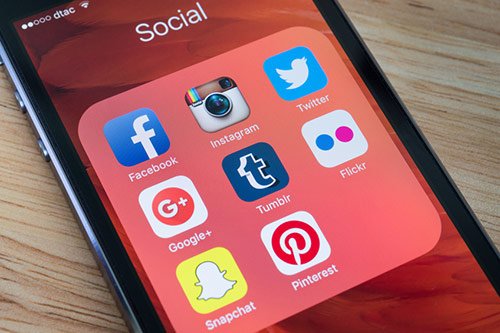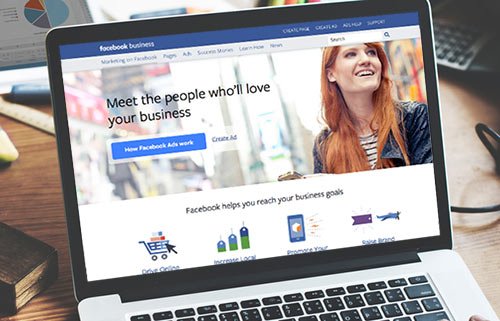Of course, nothing could be further from the truth. And even if that were true, these “kids” are among the people in the country who are in need of the services you offer at your rehab center.
The reality is social media networks like Facebook are where your target audiences spend a considerable amount of their time. In your effort to grow your center and reach those in need, social media could be your most powerful asset.

But how do you use social media to market your center? You’re not a YouTuber, so there’s no reason to create silly videos. You’re also not a beer brand or hip clothing line, so trying to create an audience of devoted followers isn’t the best use of your time either.
As a rehab/addiction center, the content you choose to share on social media should likely focus on two specific areas:
- Educating potential patients of your services
- Deliver authoritative health messages
By narrowing down your strategy to these two elements, you can ensure that your center remains professional in appearance while at the same time offers something of value to your prospects.

Before we break down each of these specific elements, and how using paid search methods will take your pain management marketing to the next level, you first have to decide which social platforms to build a profile on.
The first instinct of many is to create a profile on every platform out there. Avoid the urge. You don’t want to take on more than you can chew, nor do you want to end up abandoning a network or watering down your social messaging in order to keep each platform updated.
For the most part, Facebook will be your most important asset. Aside from the massive audience of users, Facebook is ideal for centers like yours because it allows you to create events that people can attend, allows users to rate your center, and gives you a singular space to share your story and interact with followers.

Last, and not least, Facebook also allows you to create ads to target specific audiences – which you’ll soon discover is your most powerful weapon on social media.
Breaking down the type of content to share on social media
Educating potential patients of your services
Your prospective clients use many channels to find services like yours. Their search very well may start online, with a simple Google search. But if and when they come across a few potential centers, they make take their search to Facebook to see what type of presence these centers have on social media.
By creating posts on Facebook that educate your potential patients of your services, you’re helping prospects determine whether your center is right for them.
Deliver authoritative health messages
With these types of posts, your goal is to help your audiences get on the track of a healthy lifestyle. You’re not necessarily pushing your services – or even your center. Rather, you’re focused on sharing inspiring stories or quotes, unveiling statistics and trends, and even possibly sharing free local resources available to those in need.
This approach demonstrates you as an influencer in this field and demonstrates your willingness to help those in need – even if it means not actively marketing your mental health clinic or rehab center.
Using social media advertising

There’ll be times when your prospects actively search out your social media channels because they found you online or heard of you from some other means.
But that’s not always going to be the case, and, besides, do you really want to wait for your prospects to come to you?
That’s where social media advertising comes into play.
Paid advertising has become extremely prevalent in recent years and is the most effective way to reach folks who may not know your center even exists.
There are a lot of different elements at play with social media advertising, particularly in terms of Facebook.
For starters, you’ll want to make sure that your Facebook ads are designed to attract the attention of your prospects. Stick to the two types of content we discussed above, and spend some time choosing the perfect images and content designed to stand out in an otherwise busy feed.
Next, you can target your ad based on custom audiences. By doing this, your posts can and will show up in the feeds of people who don’t already follow your page. For example, you could target audiences who live within a 30-mile radius of your center, and who vary in age from 20-34. In reality, you can narrow down your audiences even further, but the general idea is you can create several custom audiences and then tailor your ads to each of these audiences.
Another effective tool you can implement is the Facebook pixel, the social media marketing experts at this agency use it all the time. The Facebook pixel lets you do several things, including allowing you to remarket your ad to everyone who visits your site, or just to people who visit specific pages or take specific actions. Remarketing is an incredible way to expose your clinic’s branding to the same – motivated – audiences over and over again.
You can also use the Facebook pixel to find new clients who are similar to your website visitors by creating a lookalike audience.
The point is, posting on your Facebook feed is a great way to engage your existing followers and to impress visitors who might happen to stumble on your page.
But if you want to reach those prospects who use Facebook yet don’t know about you or your clinic, then advertising is the way to go.
A note about your approach to social media
Before you begin your endeavors into social media, we strongly suggest that you create a clinic-wide social media guideline that outlines what can and can’t be posted, as well as what type of language to use. This will help eliminate any potential catastrophes down the road.
Your prospects are on social media – it’s time to find them and engage with them
Social media can be an asset to your addiction treatment advertising campaign. But if you rely solely on organic postings, you’ll likely grow frustrated by the lack of growth. Turning to paid advertising will ensure your quality content is seen by a larger – and more targeted audience. This, in turn, will help build your branding and get people thinking about your clinic if and when they or someone they know needs help.

